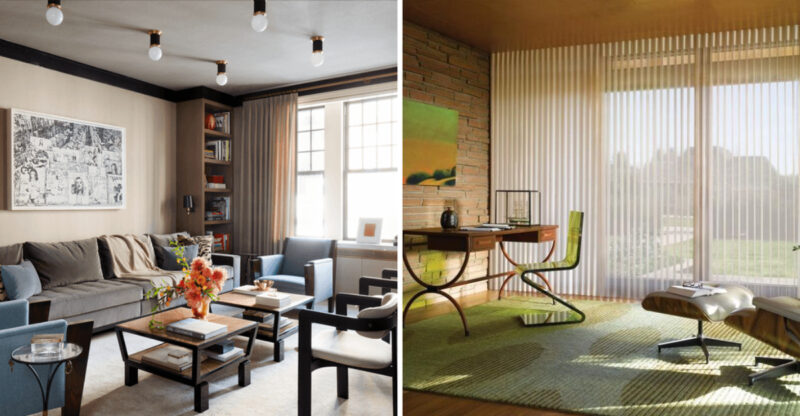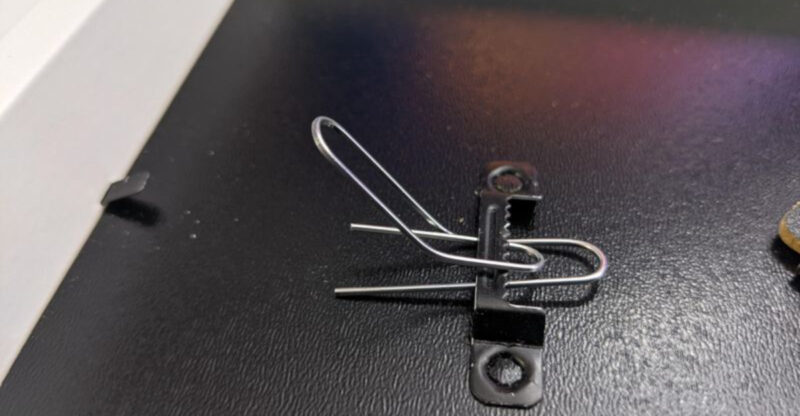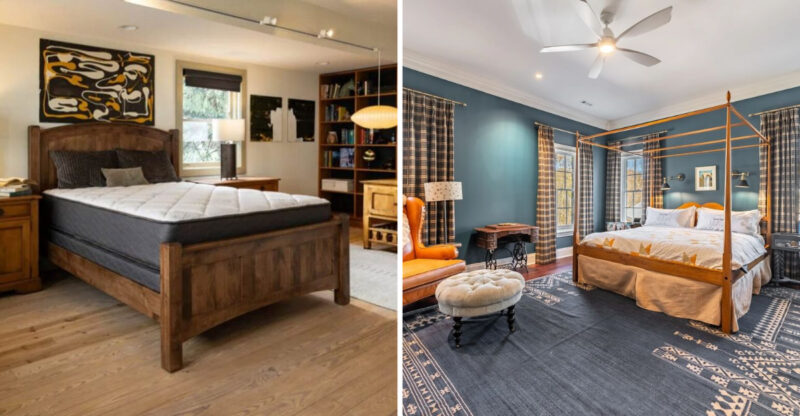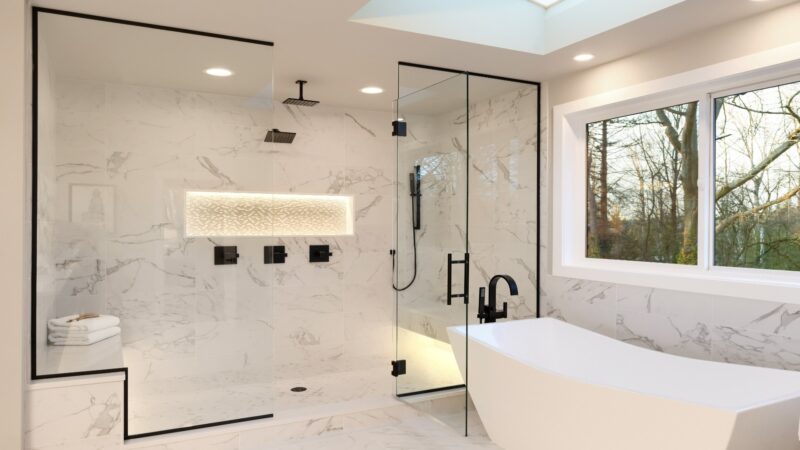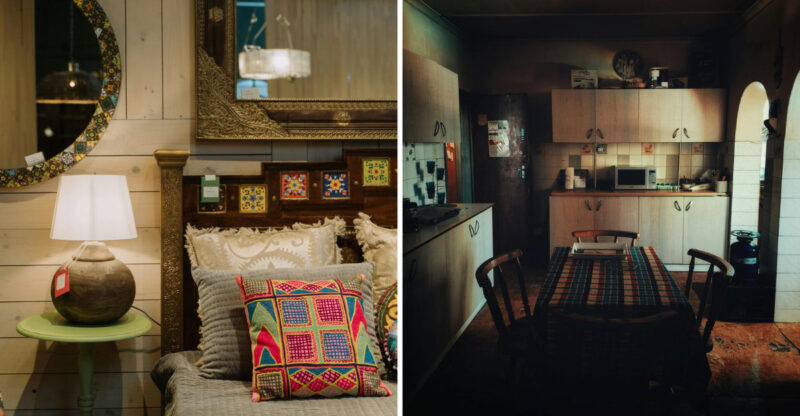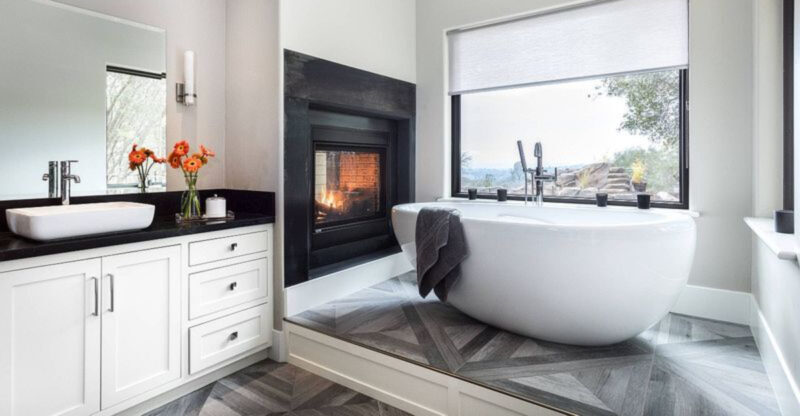10 Visual Tips That Help Small Living Rooms Appear More Spacious
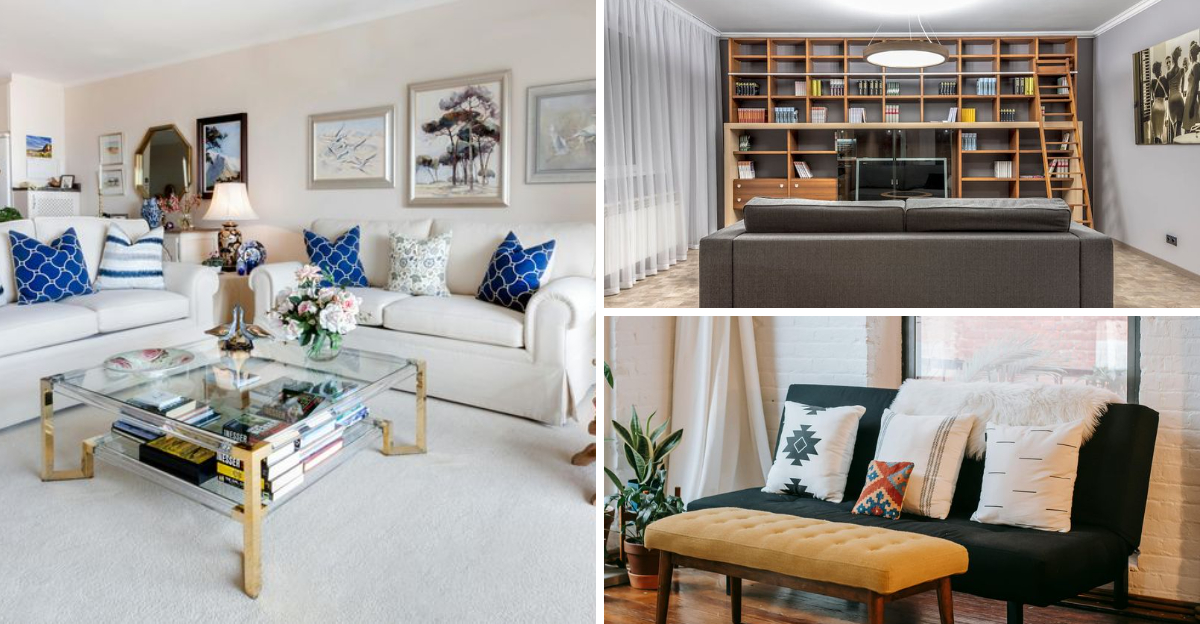
A small living room doesn’t have to feel cramped or cluttered. With the right visual tricks, you can create the illusion of space, light, and flow. No renovation required!
Whether you’re working with a compact apartment or a cozy corner in your home, simple design choices can make a big difference. You just need to follow these easy tips and help your living room look and feel more spacious.
Keep in mind that results may vary based on room layout, lighting, and furniture style.
1. Paint Walls Light And Bright
Ever walked into a room and immediately felt like you could breathe easier? Light wall colors create that exact sensation. Whites, soft grays, and pale blues reflect natural light rather than absorbing it.
Dark colors might look cozy in magazines, but they visually shrink your walls inward. I recommend Benjamin Moore’s ‘Simply White’ or ‘Pale Oak’ for clients wanting that airy vibe without feeling sterile.
Bonus tip, paint your ceiling a shade lighter than your walls to draw the eye upward and create a height illusion.
2. Elevate Your Curtain Game
Where you hang those curtains matters more than you’d think! Mounting curtain rods close to the ceiling instead of just above the window frame creates a magical height illusion.
Hanging curtains this way draws the eye upward and makes your ceiling appear taller. The curtains should also extend at least 6-8 inches beyond each side of the window.
Sheer fabrics work wonders, too. They let light filter through while still providing privacy, avoiding that boxed-in feeling heavy drapes can create.
3. Go Low With Your Furniture
How much breathing room exists above your furniture? Low-profile pieces create more visual space between the top of your furniture and the ceiling.
Mid-century modern sofas and chairs typically sit closer to the ground and have slim legs that allow you to see underneath them. This visible floor space tricks the eye into perceiving more room.
Though it might seem counterintuitive, a few larger low pieces work better than multiple small furnishings that create visual clutter.
4. Mirror, Mirror On The Wall
If there’s one design trick that never fails in small spaces, it’s the strategic placement of mirrors. Large mirrors essentially double your visual space by reflecting light and the room itself.
Position mirrors across from windows to bounce natural light throughout the room. Wall-to-wall mirrors might feel dated, but a large framed mirror leaning against a wall creates depth without the 80s flashback.
Try an oversized round mirror for a statement piece that also happens to be a space-expanding superhero.
5. Embrace The Transparency Trend
When did furniture become invisible? Glass and acrylic pieces appear to take up zero visual space while still being completely functional!
A glass coffee table doesn’t visually chop up your room the way a solid wooden one does. The eye travels right through it, creating an uninterrupted view of your floor.
Lucite or acrylic chairs pair wonderfully with small dining tables in open-concept spaces. These see-through wonders are surprisingly comfortable and add a touch of modern sophistication.
6. Keep Flooring Simple And Continuous
Though area rugs can define spaces beautifully, they can also visually chop up your floor plan. Continuous, uninterrupted flooring creates a seamless flow that expands your space.
If you do use rugs, choose one large rug rather than several small ones. Multiple rugs create visual stopping points that make the room feel disjointed and smaller.
Diagonal wood planks or large-format tiles can also make a room appear wider than it actually is by playing with perspective.
7. Reach For The Sky With Vertical Storage
Why stop at eye level when you’ve got all that glorious wall height to work with? Vertical storage draws the eye upward and maximizes every inch of available space.
Floor-to-ceiling bookcases make ceilings appear higher while providing tons of storage. Wall-mounted shelving keeps floor space open and clutter-free.
Just remember to leave some breathing room on those shelves. Cramming them full defeats the purpose of creating visual spaciousness.
8. Tone Down The Patterns
Are you a pattern enthusiast? In small spaces, bold patterns can overwhelm and make walls feel like they’re closing in on you.
Limiting patterns doesn’t mean eliminating personality. Choose one statement pattern piece, perhaps a striking accent pillow or a single wallpapered wall, and keep everything else relatively neutral.
Subtle textures like linen, velvet, or fine herringbone add interest without the visual noise that busy patterns create.
9. Float Furniture Away From Walls
Counterintuitive as it seems, pushing all furniture against walls actually makes rooms feel smaller! Pulling pieces slightly away creates breathing space that makes the room feel more open.
Floating furniture creates a sense of movement and flow. Even just a few inches between your sofa and the wall can make a significant difference in how spacious a room feels.
This technique works especially well when combined with a large area rug that grounds the arrangement while maintaining that crucial visual breathing room.
10. Harness Natural Light Power
Nothing makes a space feel more confining than inadequate lighting. Natural light is your small room’s best friend, it opens up spaces and connects them visually to the outdoors.
Avoid heavy window treatments that block precious sunlight. If privacy is a concern, try top-down, bottom-up shades or sheer curtains that filter light beautifully.
Strategically placed mirrors opposite windows multiply natural light, while glossy surfaces like lacquered tables or metallic accents help bounce light around the room.

